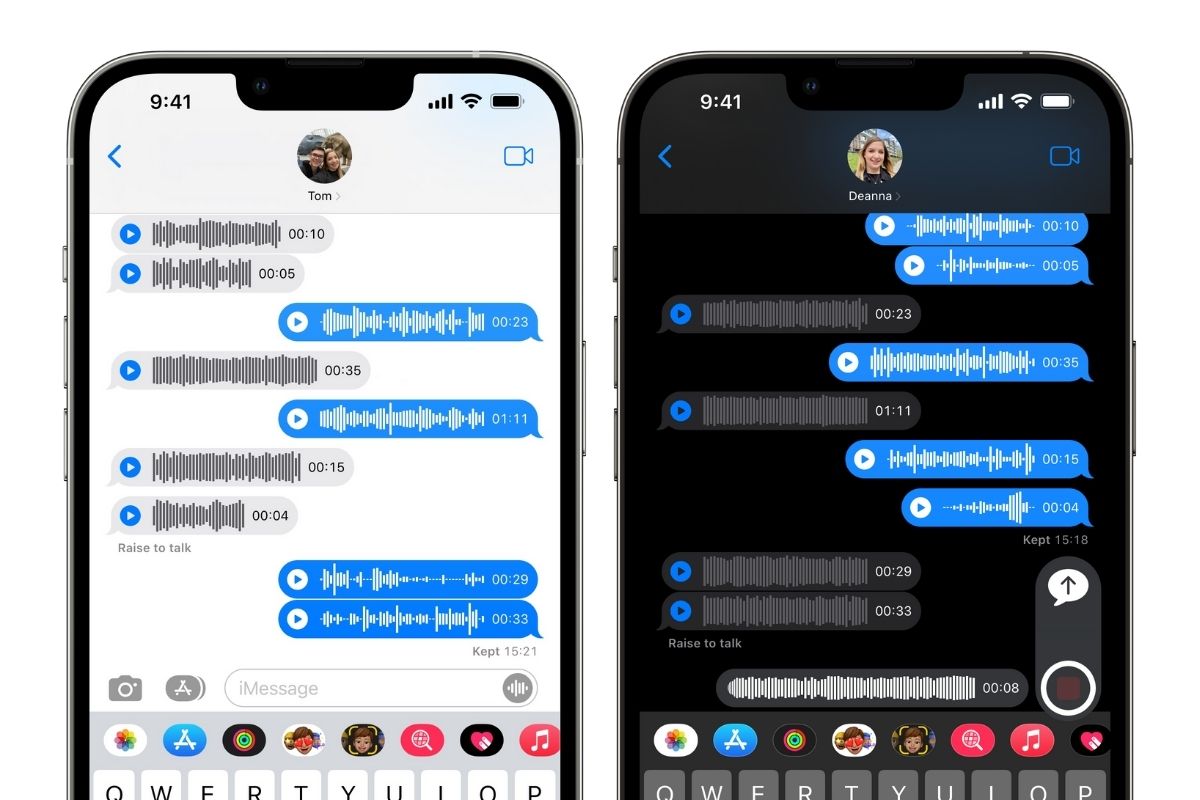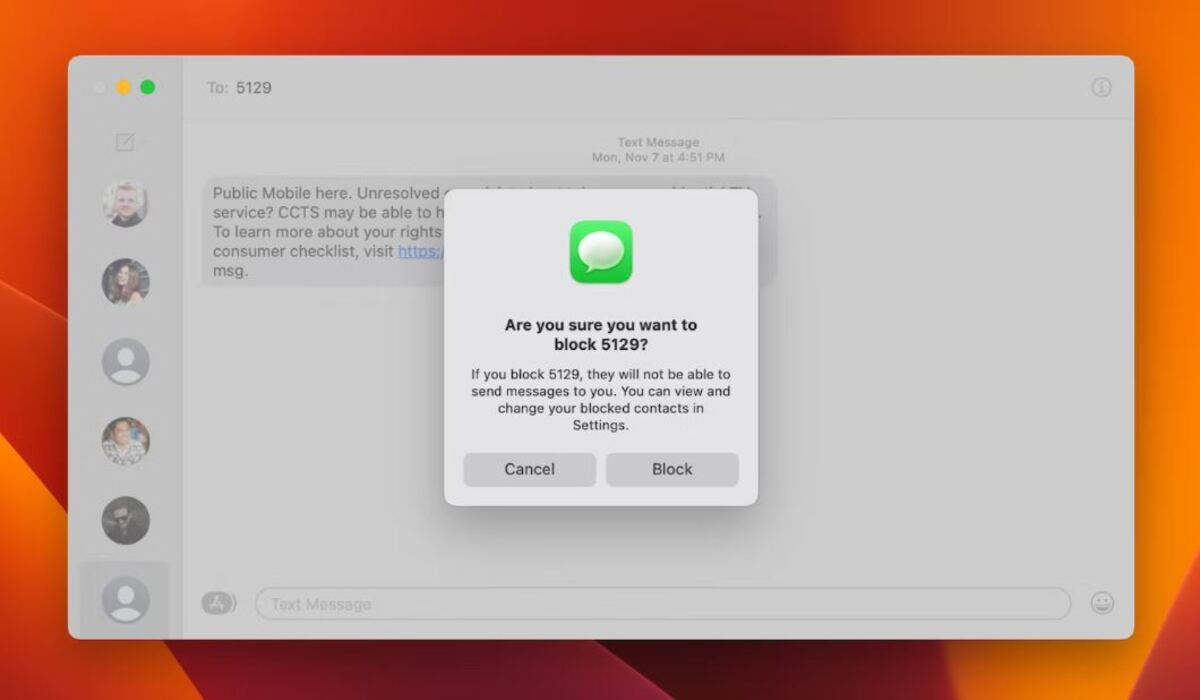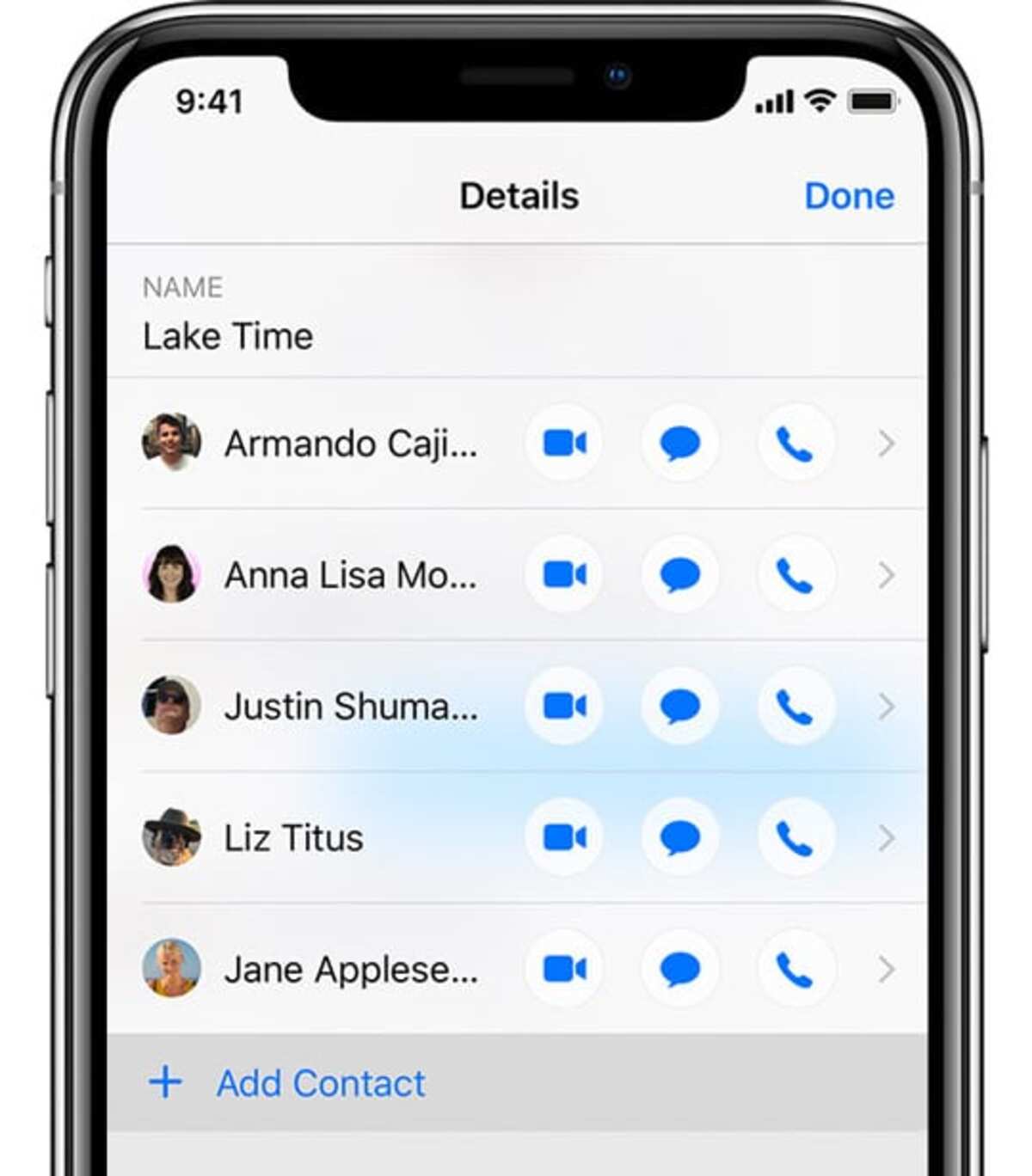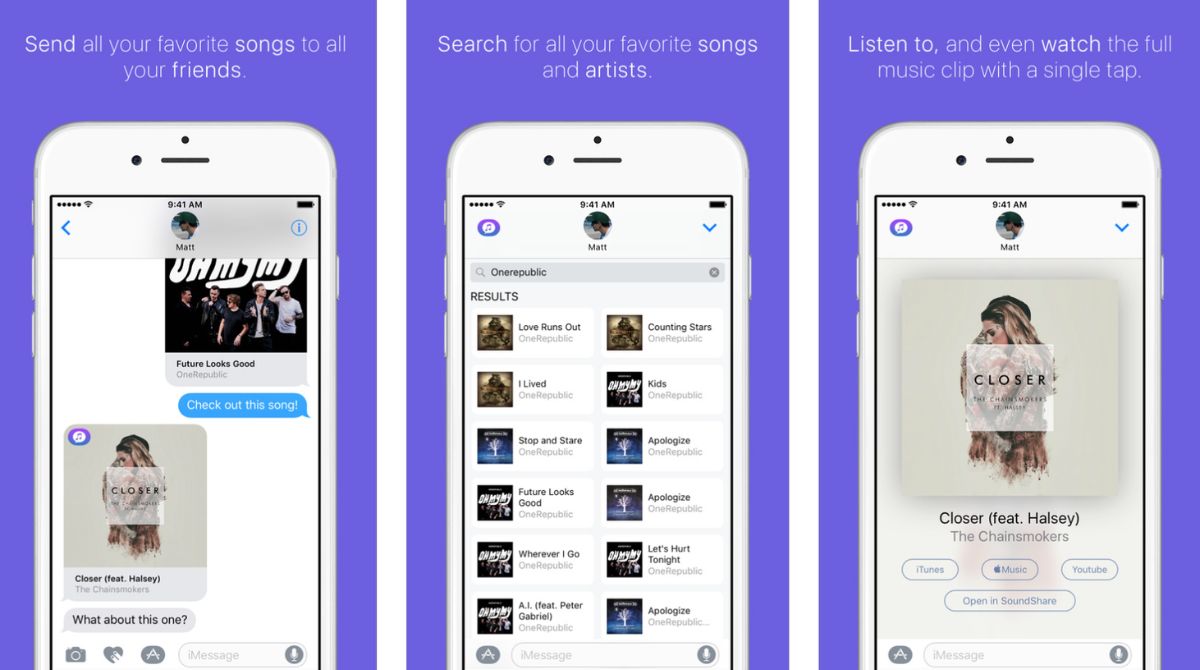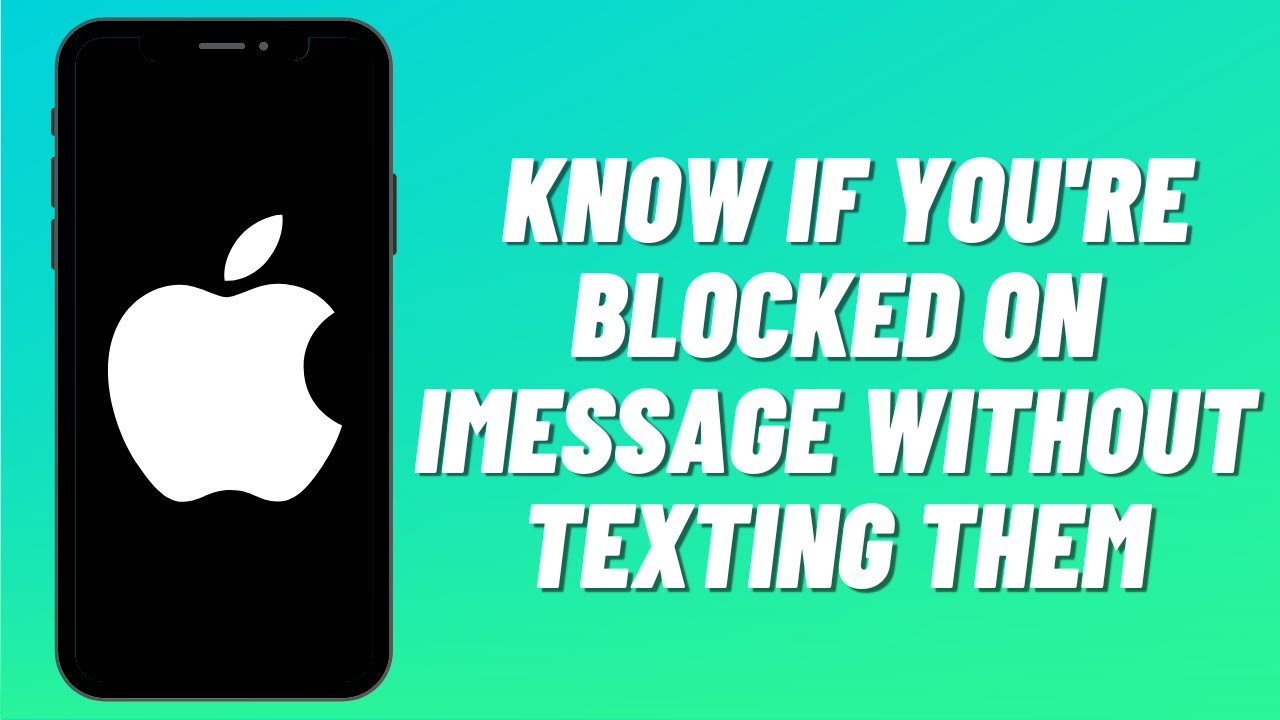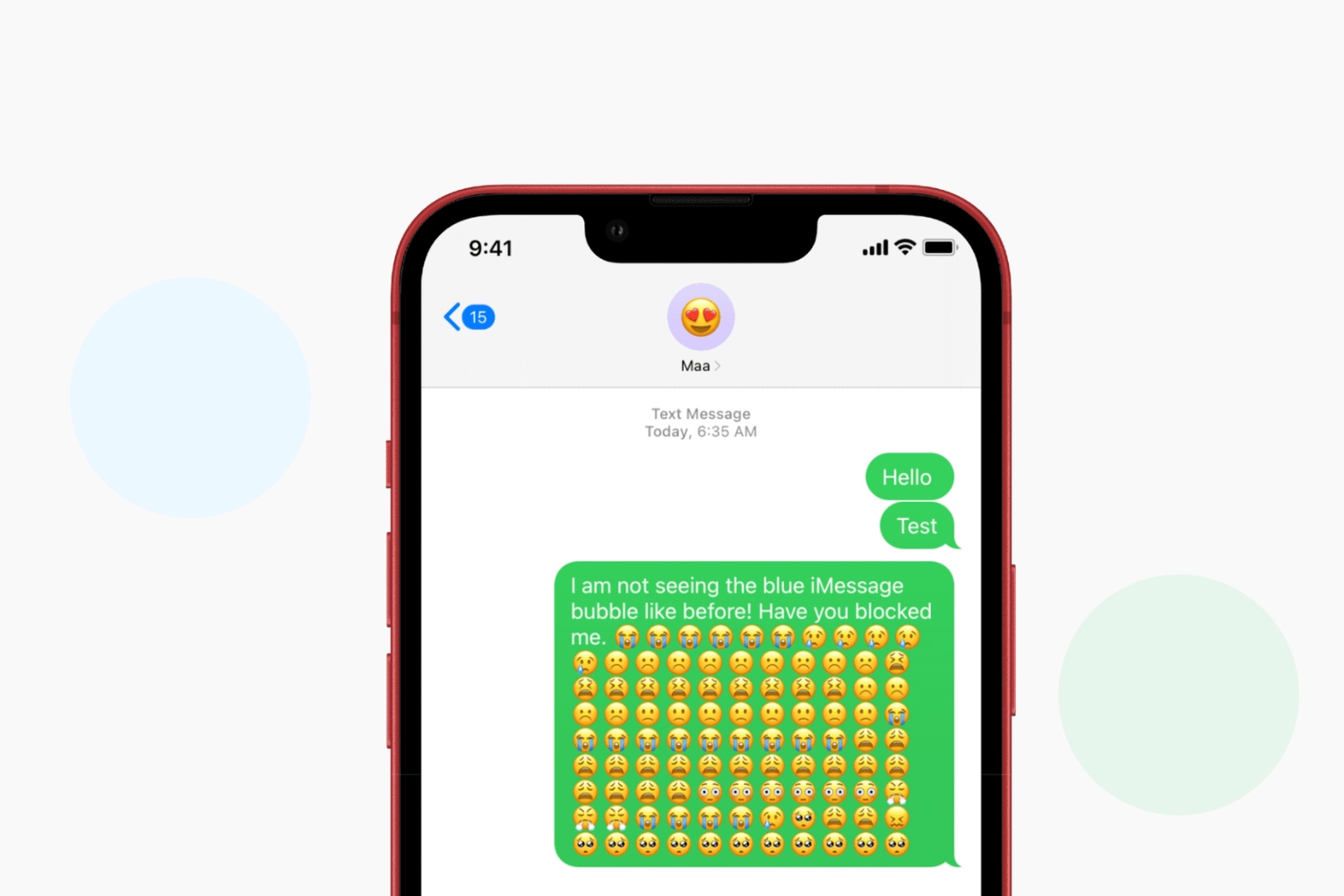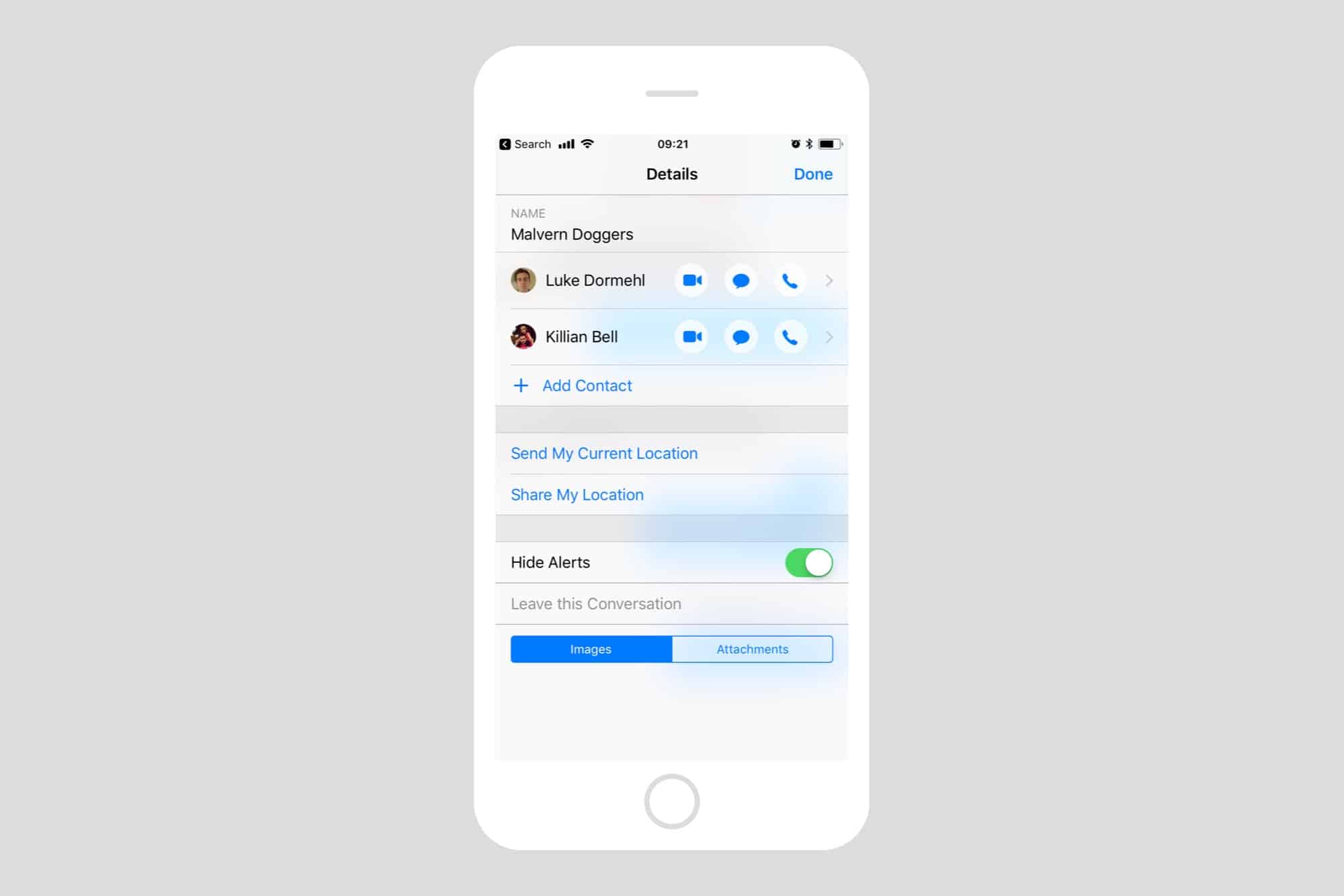Introduction
Welcome to the world of iMessage, Apple’s instant messaging platform that allows users to send text messages, photos, videos, and even audio messages. With its seamless integration into Apple’s ecosystem, iMessage has become a popular choice for iPhone, iPad, and Mac users to stay connected with their friends and family.
One of the unique features of iMessage is the ability to send and receive audio messages. Whether it’s a quick voice memo, a heartfelt message, or a fun audio clip, iMessage audio messages allow users to communicate in a more personal and expressive way. However, along with the convenience and versatility of iMessage audio messages come some privacy concerns.
In this article, we will explore the question that many iMessage users have: “Can someone see when you listen to an iMessage audio message?” We will delve into the factors that determine whether someone can see if you have listened to their audio message and provide tips on how to maintain privacy while using iMessage audio messages.
So, if you’re curious to know how iMessage handles audio messages and whether your listening activity can be tracked, read on to find out!
Understanding iMessage Audio Messages
Before we dive deeper into the privacy concerns surrounding iMessage audio messages, let’s first understand how they work. iMessage audio messages allow users to record and send spoken messages to their contacts. These messages can be played back directly within the iMessage conversation, providing a more dynamic and personal communication experience.
When you send an iMessage audio message, your device records your voice and converts it into a digital audio file. This file is then compressed and attached to the message, which is sent to the recipient through Apple’s servers. Upon receiving the message, the recipient can play the audio message by simply tapping on it.
One of the advantages of iMessage audio messages is that they can be sent over both Wi-Fi and cellular data networks, ensuring that you can communicate through voice even in areas with poor network coverage. Furthermore, since iMessage audio messages are integrated into the iMessage platform, they can be accessed and played seamlessly across all Apple devices logged in with the same Apple ID.
It’s important to note that iMessage audio messages are different from regular phone calls or FaceTime audio calls. While phone calls and FaceTime audio calls require real-time communication, iMessage audio messages are asynchronous, allowing you to leave and listen to messages at your convenience.
With the basic understanding of how iMessage audio messages work, let’s now address the privacy concerns associated with these messages and whether someone can see when you listen to them.
Privacy Concerns with iMessage Audio Messages
When it comes to any form of digital communication, privacy is a top concern for many users. iMessage audio messages are no exception. Users want to know whether their listening activity can be tracked by the sender or if their privacy is compromised in any way.
Fortunately, iMessage audio messages are designed with privacy in mind. By default, iMessage offers end-to-end encryption, which means that only the sender and the recipient can access the contents of the messages. This encryption ensures that third parties, including Apple itself, cannot decrypt and read the messages.
However, despite the encryption, there are still some privacy implications to consider. When you receive an iMessage audio message, the sender is notified when the message has been delivered to your device. This delivery notification ensures that the sender knows the message has successfully reached you.
Additionally, iMessage offers a “Read” receipt feature, which allows the sender to see if you have actually read their message. When you open and listen to an iMessage audio message, the sender will be notified with a “Read” receipt, indicating that you have seen and listened to their message. This feature aims to provide transparency and indicate that the message has been acknowledged.
While the “Read” receipt can be convenient in certain situations, it can also raise privacy concerns, as it reveals when you have accessed and listened to the audio message. Some users may prefer to maintain their privacy and not let the sender know their activity status.
In the next section, we will explore whether the sender can see when you listen to an iMessage audio message, and the factors that determine if this information is disclosed.
Can Someone See When You Listen to an iMessage Audio Message?
Now, let’s address the burning question: can someone see when you listen to an iMessage audio message? The answer is both yes and no, depending on certain factors.
If you have the “Read” receipt feature enabled in your iMessage settings, the sender of the audio message will be able to see when you have listened to their message. A “Read” receipt will be sent to the sender indicating that you have accessed and played their audio message. This receipt provides the sender with the assurance that you have received and acknowledged their message.
However, if you have disabled the “Read” receipt feature, the sender will not receive any notification or confirmation when you listen to their iMessage audio message. This setting allows you to maintain your privacy and keep your listening activity discreet.
It’s important to note that the “Read” receipt feature is not specific to audio messages but applies to all types of iMessage content, including text messages, photos, and videos. Therefore, disabling the “Read” receipt will affect all incoming iMessage notifications, not just audio messages.
To recap, if you have the “Read” receipt feature enabled, the sender will see when you listen to their iMessage audio message. If you disable the “Read” receipt feature, the sender will not receive any confirmation of your listening activity.
In the next section, we will discuss the factors that determine whether someone can see when you listen to an iMessage audio message.
Factors that Determine if Someone Can See When You Listen to an iMessage Audio Message
Whether or not someone can see when you listen to an iMessage audio message depends on a few key factors. Here are the factors that determine if someone can see your listening activity:
- “Read” Receipt Setting: The primary factor is whether you have enabled or disabled the “Read” receipt feature in your iMessage settings. If the feature is enabled, the sender will be notified when you listen to their audio message. If it is disabled, your listening activity will remain private to the sender.
- Sender’s iMessage Settings: Another crucial factor is whether the sender has enabled their own “Read” receipt setting. Even if you have the feature disabled, the sender can only see when you listen to their audio message if they have it enabled on their end. It’s important to note that it’s a mutual setting between the sender and the receiver.
- Message Status: The status of the message can also impact whether the sender can see your listening activity. If the message is marked as “Delivered,” the sender will know that the message has reached your device. However, they can only see when you listen to the audio message if it has been marked as “Read” with the “Read” receipt feature enabled.
- Device Compatibility: The compatibility of devices can impact whether the sender can see your listening activity. For example, if the sender is using an older version of iOS or macOS that does not support the “Read” receipt feature, they will not receive any notification when you listen to their audio message, even if you have the feature enabled on your device.
It’s important to keep these factors in mind when considering the privacy of your iMessage audio message interactions. By understanding these elements, you can make informed decisions about your privacy settings and ensure that your listening activity remains confidential if desired.
In the next section, we will explore how to check if someone has listened to your iMessage audio message.
How to Check if Someone Has Listened to Your iMessage Audio Message
If you’re curious to know whether someone has listened to your iMessage audio message, there are a few indicators you can look out for:
- “Read” Receipt: If the recipient has enabled the “Read” receipt feature in their iMessage settings, you will receive a notification when they have listened to your audio message. The “Read” receipt will indicate that the message has been read, giving you confirmation that they have listened to your message.
- “Delivered” Status: Even if the recipient has disabled the “Read” receipt feature, you can still see if the message has been delivered to their device. If the message shows the status as “Delivered,” it means that it has successfully reached their device. However, without the “Read” receipt, you won’t know if they have actually listened to the audio message.
- Conversation Timestamps: Another way to gauge if the recipient has listened to your audio message is by observing the timestamps in the conversation. If the timestamps show that they have responded or interacted with you shortly after you sent the audio message, it’s likely that they have listened to it.
- Direct Confirmation: If you’re still uncertain whether the recipient has listened to your iMessage audio message, you can always reach out to them directly and ask if they received and listened to the message. Communication is key, and a simple conversation can clear up any doubts or misunderstandings.
It’s important to respect the privacy choices of the recipient. If they have disabled the “Read” receipt feature, understand that they may prefer to keep their listening activity private. While it’s natural to be curious, it’s essential to maintain respect and considerate behavior in your communication interactions.
In the next section, we will discuss how to hide the “Read” receipt for iMessage audio messages to maintain privacy.
How to Hide the “Read” Receipt for iMessage Audio Messages
If you value your privacy and prefer not to let senders know when you listen to their iMessage audio messages, you can disable the “Read” receipt feature. Here’s how you can hide the “Read” receipt for iMessage audio messages:
- Step 1: Open Settings: On your iPhone, iPad, or iPod touch, navigate to the “Settings” app.
- Step 2: Select Messages: Scroll down and tap on “Messages” to access the iMessage settings.
- Step 3: Disable “Send Read Receipts”: In the Messages settings, find the “Send Read Receipts” option and toggle it off. This will disable the “Read” receipt feature for all incoming iMessage content, including audio messages.
By following these steps, senders will no longer receive a “Read” receipt when you listen to their iMessage audio messages. It allows you to maintain your privacy and listen to messages without worrying about the sender being notified.
It’s important to note that disabling the “Read” receipt feature will also affect other types of iMessage content, such as text messages, photos, and videos. The choice to disable or enable this feature should align with your privacy preferences and the level of transparency you desire in your communication interactions.
Keep in mind that by disabling the “Read” receipt feature, you will no longer be able to see if others have read your iMessage audio messages. It’s a trade-off between privacy and the ability to confirm message acknowledgment. Consider the implications before making your decision.
In the final section, we will explore alternative messaging platforms that offer secure and private audio messaging options.
Alternatives to iMessage for Secure and Private Audio Messaging
While iMessage offers convenient audio messaging capabilities, there are several alternative messaging platforms that prioritize security and privacy. If you’re seeking secure and private audio messaging options, consider the following alternatives:
- Signal: Signal is a popular messaging app known for its strong emphasis on privacy and security. It offers end-to-end encryption for all communications, including audio messages. With Signal, you can enjoy secure and private audio messaging without worrying about your data being intercepted or accessed by third parties.
- Telegram: Telegram is another messaging app that offers a range of privacy features. It also provides end-to-end encryption for voice messages, ensuring that your audio messages remain protected. Telegram’s optional “Secret Chats” feature provides additional security by enabling self-destructing messages and encrypted communications.
- WhatsApp: WhatsApp, owned by Facebook, implements end-to-end encryption for all types of messages, including audio messages. It is widely used globally and offers a user-friendly interface for audio messaging. However, keep in mind that WhatsApp collects metadata, so if you are concerned about that aspect, you may want to consider other options.
- Wire: Wire is a secure messaging app that puts a strong focus on privacy and data protection. It offers end-to-end encryption for audio and text messages, ensuring that your conversations remain private. Wire also provides additional features like video calling and file sharing, making it a versatile option for secure communication.
- Threema: Threema is a privacy-focused messaging app that boasts end-to-end encryption for all communications, including audio messages. It assigns each user a unique identifier, ensuring anonymity. Threema also does not store any user data, providing an additional layer of privacy protection.
These alternatives provide secure and private audio messaging options, giving you peace of mind that your conversations are safeguarded. Evaluate your specific privacy needs and choose the messaging app that aligns with your requirements.
Remember, no messaging app is entirely foolproof, and it’s crucial to stay updated with the latest security features and practices. Regularly check for app updates and be cautious about sharing sensitive information through any messaging platform.
With these alternatives, you can explore secure and private audio messaging options beyond iMessage.
Conclusion
iMessage audio messages offer a convenient and expressive way to communicate with others. However, privacy concerns surrounding these messages have raised questions about whether someone can see when you listen to their audio message. By understanding the factors that determine if someone can see your listening activity, you can better manage your privacy settings and communication interactions.
While iMessage provides the “Read” receipt feature, allowing senders to know when you have listened to their audio messages, you have the option to disable this feature and maintain your privacy. By toggling off the “Send Read Receipts” setting in the iMessage settings, you can prevent senders from receiving confirmation of your listening activity.
If privacy is a top priority for you in audio messaging, exploring alternative messaging platforms that prioritize security and privacy, such as Signal, Telegram, or Wire, may be worth considering. These platforms offer end-to-end encryption and additional privacy features for secure audio messaging.
Ultimately, the choice of whether to enable or disable the “Read” receipt feature and the selection of messaging platforms should align with your privacy preferences and communication needs. It’s important to strike a balance between convenience and privacy, keeping in mind that maintaining privacy may mean sacrificing certain features and notifications.
Remember to stay informed about the latest security features and practices, regularly update your messaging apps, and be cautious about sharing sensitive information through any messaging platform.
Whether you choose to let senders know when you have listened to their iMessage audio messages or prefer to maintain your privacy, iMessage and alternative messaging platforms offer options to suit your communication needs while respecting your privacy.









